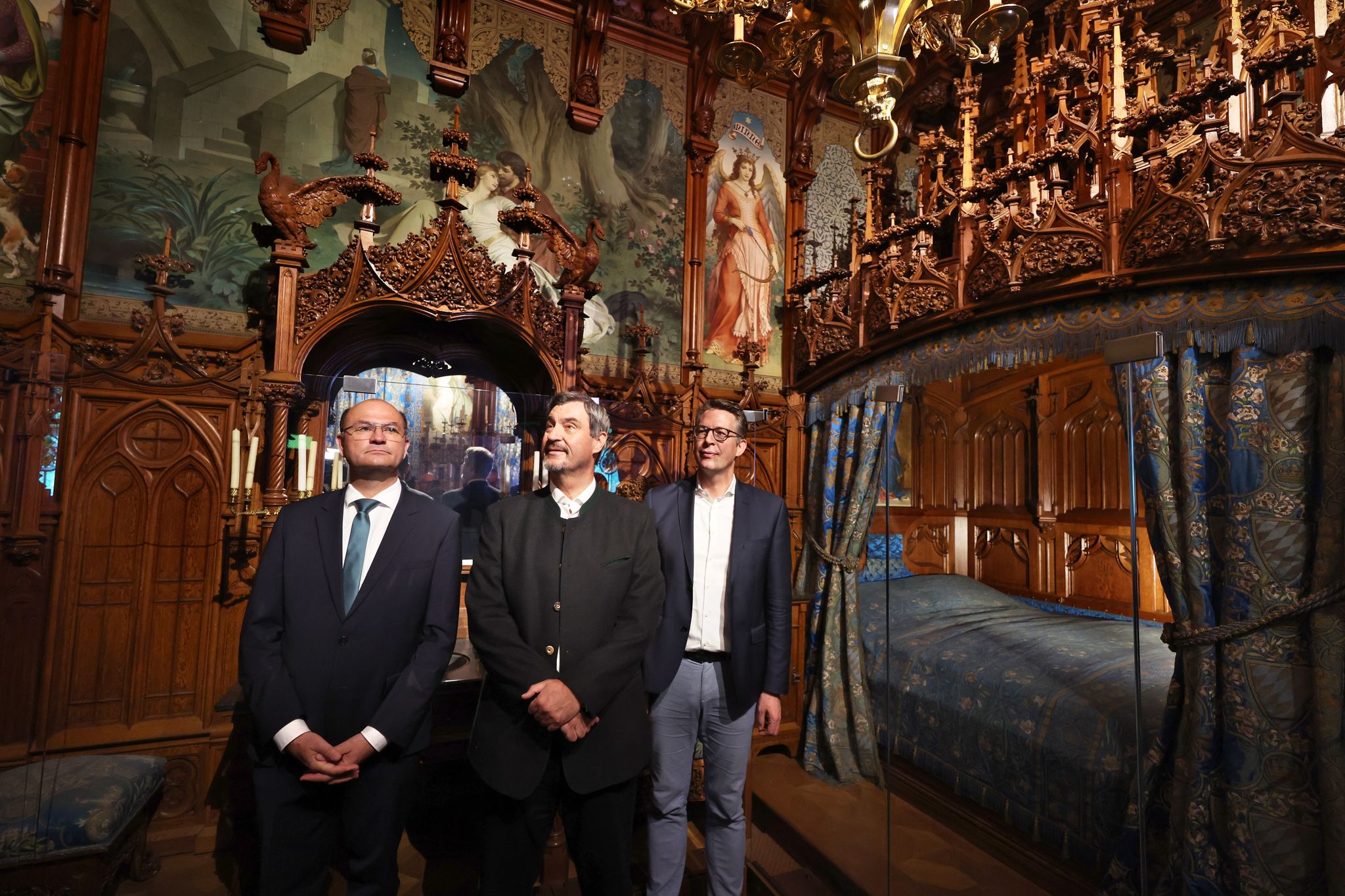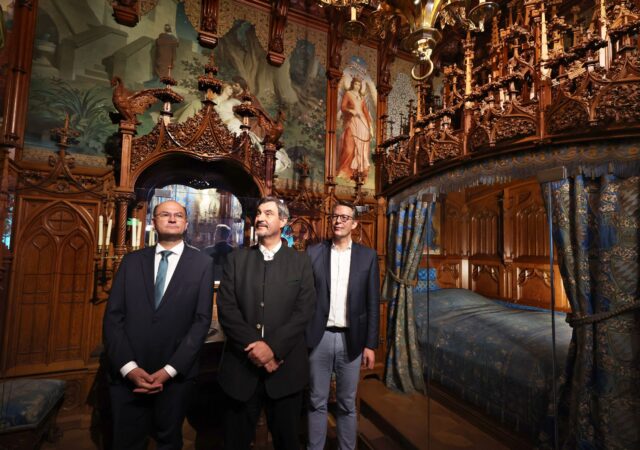Albert Fueracker (L-R), Bavarian Minister of Finance, Markus Soeder, Prime Minister of Bavaria, and Markus Blume, Bavarian Minister of Science and the Arts, stand in Neuschwanstein Castle, in King Ludwig II’s bedroom. The official occasion of the appointment is the completion of the more than 40 million euro renovation of the castle. Credit: Karl-Josef Hildenbrand/dpa
The UN’s cultural organization UNESCO on Saturday placed the famous fairytale castles of Bavaria’s King Ludwig II on its World Heritage List.
At its meeting in Paris, the World Heritage Committee added Neuschwanstein, Herrenchiemsee and Linderhof Castles as well as the royal house on Schachen Mountain in Upper Bavaria to be World Heritage Sites.
The bid has been more than a quarter-century in the making. Set against idyllic Alpine backdrops, the castles have long been a magnet for tourists – drawing over 1.7 million visitors last year, many of them from abroad.
Built in the second half of the 19th century by Bavaria’s King Ludwig II (1845–1886), the castles were designed to evoke medieval romance and fantasy.
Built in the second half of the 19th century by Bavaria’s Ludwig II (1845–1886), the castles were designed to evoke medieval romance and fantasy.
Neuschwanstein, resembling a knight’s fortress and major influence on Walt Disney’s animated castles, and Herrenchiemsee, inspired by Versailles, reflect Ludwig’s vision of theatrical, dreamlike architecture rather than strict historical authenticity.
While World Heritage status does not come with funding, it significantly boosts international recognition and tourism. It also obliges the host country to preserve and protect the sites and report regularly to UNESCO.
This year, around 30 cultural and natural sites are up for inclusion, including Jamaica’s sunken city of Port Royal, which was destroyed by a tsunami in 1692, the modernist city centre of Gdynia in Poland, and memorials in Cambodia commemorating the victims of the Khmer Rouge.
Source: dpa







